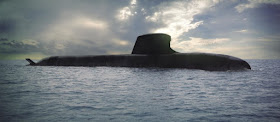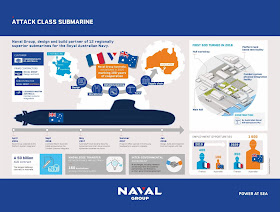Musafir117
ELITE MEMBER

- Joined
- Mar 11, 2014
- Messages
- 9,613
- Reaction score
- -3
- Country
- Location
AUSTRALIA will embark on the largest peacetime upgrade to our armed forces in history in the face of a rapid military build-up in our region and multiple global security threats.
An unprecedented expansion of naval, air force and army capability over the next 20 years will also boost the size of the Australian Defence Force to more than 62,000 — the largest military force since 1993.
Australia’s spying capability and surveillance footprint will also be dramatically extended, making us the eyes and ears of the South East Asia region with the use of high-altitude, long-range unmanned drones for the first time.

There will be a development of an Australian drone program as part of the upgrade.
Hi-tech missile defence systems will also be deployed for the first time alongside new long-range cruise missile capability for strike fighters as part of a sophisticated and “potent” war machine costing almost half a trillion dollars over 10 years.
The army will get new long-range rocket systems and the navy’s submarine fleet will double from six to 12.
The naval fleet will be substantially upgraded with air-warfare destroyers and anti-submarine warfare frigates in a strategic plan designed to maintain capability superiority in the region.
The release of the 2016 Defence White Paper yesterday concluded that the risk of a foreign country attack on Australia was still remote but the military build-up, particularly by China, and the potential for regional conflict posed a potential risk to Australia’s national security.
“This White Paper is a plan to deliver a more potent, agile and engaged Australian Defence Force that is ready to respond whenever our interests are threatened or our help is needed,” Prime Minister Malcolm Turnbull said.
The White Paper, commissioned by former prime minister Tony Abbott, also elevated domestic and foreign terrorism as a key issue for the military.
Special Forces assault groups will be armed to rapidly respond to terrorist attacks on home soil, and ADF cyber and intelligence capabilities would become critical to preventing terrorist atrocities.

The total defence budget will be boosted by $29 billion bringing the total 10-year spend to $448 billion.
In a pointed reference to China’s increasingly belligerent activities in the South China Sea, the White Paper said the risk of military confrontation in the region had been increased.
“The growth in the capability of China’s military forces is the most significant example of regional military modernisation,” the White Paper said.
“We can expect greater uncertainty in Australia’s strategic environment.”
The strategic outlook underpinning the $195 billion in military acquisitions cited risks posed from the changing power balance in the region, the threat of terrorism, the modern militarisation of our neighbours, cyber warfare threats and weapons of mass destruction from rogue nations such as North Korea.
“Over the next 20 years a large number of regional forces will be able to operate at a greater range and with more precision than ever.”
The total defence budget will be boosted by $29 billion bringing the total 10-year spend to $448 billion.
SPECIAL FORCES TARGET TERROR
Simon Benson and Daniel Meers
MILITARY tactical assault groups will be rearmed to rapidly respond to terrorist attacks on home soil as part of an unprecedented expansion of Australia’s defence capability in the face of multiple and growing global threats.
The Defence White Paper released yesterday revealed special forces units would be equipped with new weaponry and rapid response aerial assault and rescue capability.
“The government is providing Defence with enhanced domestic security capabilities to help respond to the threat of complex terrorist attacks within Australia,” the paper said.
“The government will invest in the ADF’s capabilities to ensure that it can continue to effectively contribute to domestic counter-terrorism operations. This includes enhancing weapons, equipment, tactical mobility and situational awareness of our special forces and strengthening Defence’s intelligence and air lift capabilities.”
The changes are likely to see defence personnel far more visible on Australian soil and in the mainstream community to terror proof Australia from mass casualty events. Special forces tactical assault groups will be able to rapidly deploy to local law enforcement operations including bomb detection and disposal operations.
Defence will also work with local agencies to disrupt foreign terror threats.
Prime Minister Malcolm Turnbull said while Australia remained a land of opportunity, it was critical the nation was prepared for potential incidents.
“In the period to 2035, Australia will have greater opportunities for prosperity and development, but it will also face greater uncertainty. We need to be prepared.”
Foreign Minister Julie Bishop said the White Paper had better prepared Australia for terror attacks.
“Australia has a defence force prepared for future challenges, and we are ensuring that our defence force protects the people of Australia by investing in greater security in our region,’’ Ms Bishop said.
http://www.dailytelegraph.com.au/te...n/news-story/8a0d820e950f80fc042346fc218bf162
@Shotgunner51
An unprecedented expansion of naval, air force and army capability over the next 20 years will also boost the size of the Australian Defence Force to more than 62,000 — the largest military force since 1993.
Australia’s spying capability and surveillance footprint will also be dramatically extended, making us the eyes and ears of the South East Asia region with the use of high-altitude, long-range unmanned drones for the first time.
There will be a development of an Australian drone program as part of the upgrade.
Hi-tech missile defence systems will also be deployed for the first time alongside new long-range cruise missile capability for strike fighters as part of a sophisticated and “potent” war machine costing almost half a trillion dollars over 10 years.
The army will get new long-range rocket systems and the navy’s submarine fleet will double from six to 12.
The naval fleet will be substantially upgraded with air-warfare destroyers and anti-submarine warfare frigates in a strategic plan designed to maintain capability superiority in the region.
The release of the 2016 Defence White Paper yesterday concluded that the risk of a foreign country attack on Australia was still remote but the military build-up, particularly by China, and the potential for regional conflict posed a potential risk to Australia’s national security.
“This White Paper is a plan to deliver a more potent, agile and engaged Australian Defence Force that is ready to respond whenever our interests are threatened or our help is needed,” Prime Minister Malcolm Turnbull said.
The White Paper, commissioned by former prime minister Tony Abbott, also elevated domestic and foreign terrorism as a key issue for the military.
Special Forces assault groups will be armed to rapidly respond to terrorist attacks on home soil, and ADF cyber and intelligence capabilities would become critical to preventing terrorist atrocities.
The total defence budget will be boosted by $29 billion bringing the total 10-year spend to $448 billion.
In a pointed reference to China’s increasingly belligerent activities in the South China Sea, the White Paper said the risk of military confrontation in the region had been increased.
“The growth in the capability of China’s military forces is the most significant example of regional military modernisation,” the White Paper said.
“We can expect greater uncertainty in Australia’s strategic environment.”
The strategic outlook underpinning the $195 billion in military acquisitions cited risks posed from the changing power balance in the region, the threat of terrorism, the modern militarisation of our neighbours, cyber warfare threats and weapons of mass destruction from rogue nations such as North Korea.
“Over the next 20 years a large number of regional forces will be able to operate at a greater range and with more precision than ever.”
The total defence budget will be boosted by $29 billion bringing the total 10-year spend to $448 billion.
SPECIAL FORCES TARGET TERROR
Simon Benson and Daniel Meers
MILITARY tactical assault groups will be rearmed to rapidly respond to terrorist attacks on home soil as part of an unprecedented expansion of Australia’s defence capability in the face of multiple and growing global threats.
The Defence White Paper released yesterday revealed special forces units would be equipped with new weaponry and rapid response aerial assault and rescue capability.
“The government is providing Defence with enhanced domestic security capabilities to help respond to the threat of complex terrorist attacks within Australia,” the paper said.
“The government will invest in the ADF’s capabilities to ensure that it can continue to effectively contribute to domestic counter-terrorism operations. This includes enhancing weapons, equipment, tactical mobility and situational awareness of our special forces and strengthening Defence’s intelligence and air lift capabilities.”
The changes are likely to see defence personnel far more visible on Australian soil and in the mainstream community to terror proof Australia from mass casualty events. Special forces tactical assault groups will be able to rapidly deploy to local law enforcement operations including bomb detection and disposal operations.
Defence will also work with local agencies to disrupt foreign terror threats.
Prime Minister Malcolm Turnbull said while Australia remained a land of opportunity, it was critical the nation was prepared for potential incidents.
“In the period to 2035, Australia will have greater opportunities for prosperity and development, but it will also face greater uncertainty. We need to be prepared.”
Foreign Minister Julie Bishop said the White Paper had better prepared Australia for terror attacks.
“Australia has a defence force prepared for future challenges, and we are ensuring that our defence force protects the people of Australia by investing in greater security in our region,’’ Ms Bishop said.
http://www.dailytelegraph.com.au/te...n/news-story/8a0d820e950f80fc042346fc218bf162
@Shotgunner51








